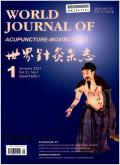Transcutaneous electrical acupoint stimulation (TEAS): Applications and challenges
IF 1.3
4区 医学
Q4 INTEGRATIVE & COMPLEMENTARY MEDICINE
引用次数: 0
Abstract
Transcutaneous electrical acupoint stimulation (TEAS) is a kind of physical therapy that use electric current through the electrodes placed on the surface of acupoints to produce clinical effects in the human body, which is characterized by less adverse reaction and convenient operation. It has been widely used in the treatment of various diseases. This review introduces six major clinical applications of TEAS, named analgesia, regulation of gastrointestinal function, improvement of reproductive function, enhancement of cognitive function, promotion of limb function recovery and relief of fatigue. Besides, TEAS has been applied to the treatment of other chronic diseases such as hypertension and diabetes, achieving satisfactory clinical effects. However, two crucial challenges are encountered in the development of TEAS. One is the lack of standardization in the selection of parameters such as waveform, frequency, intensity and stimulation duration. The other is the limitation on the flexibility in the acupoint selection. This review analyzes key issues that need to be addressed in the current clinical application of TEAS, such as the selection of parameters and acupoints, and this review provides a certain reference value for optimizing regimens of TEAS and promoting its development and application.
经皮穴位电刺激(TEAS):应用和挑战
经皮穴位电刺激(TEAS)是一种利用电流通过放置在穴位表面的电极在人体内产生临床效果的物理疗法,具有不良反应少、操作方便等特点。它已被广泛应用于各种疾病的治疗。本文综述了tea在镇痛、调节胃肠功能、改善生殖功能、增强认知功能、促进肢体功能恢复和缓解疲劳等方面的主要临床应用。此外,tea已应用于高血压、糖尿病等其他慢性疾病的治疗,取得了满意的临床效果。然而,在tea的发展过程中遇到了两个关键的挑战。一是波形、频率、强度和刺激持续时间等参数的选择缺乏标准化。二是对取穴灵活性的限制。本文分析了目前临床应用中需要解决的关键问题,如参数的选择、穴位的选择等,对优化tea的治疗方案,促进tea的开发和应用具有一定的参考价值。
本文章由计算机程序翻译,如有差异,请以英文原文为准。
求助全文
约1分钟内获得全文
求助全文
来源期刊

World Journal of Acupuncture-Moxibustion
INTEGRATIVE & COMPLEMENTARY MEDICINE-
CiteScore
1.30
自引率
28.60%
发文量
1089
审稿时长
50 days
期刊介绍:
The focus of the journal includes, but is not confined to, clinical research, summaries of clinical experiences, experimental research and clinical reports on needling techniques, moxibustion techniques, acupuncture analgesia and acupuncture anesthesia.
 求助内容:
求助内容: 应助结果提醒方式:
应助结果提醒方式:


